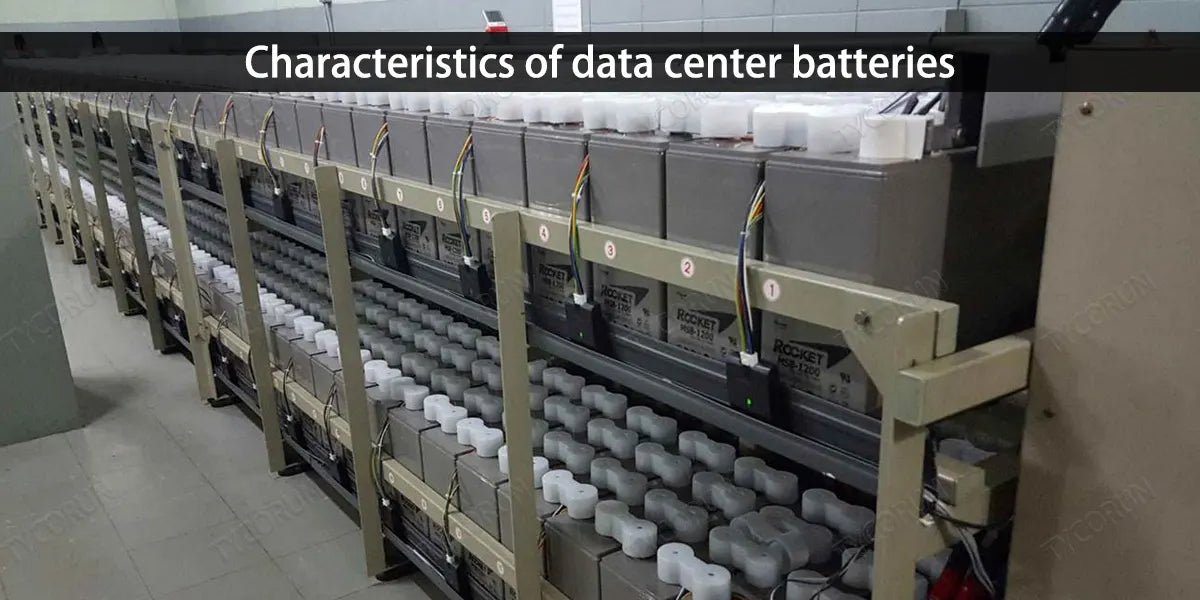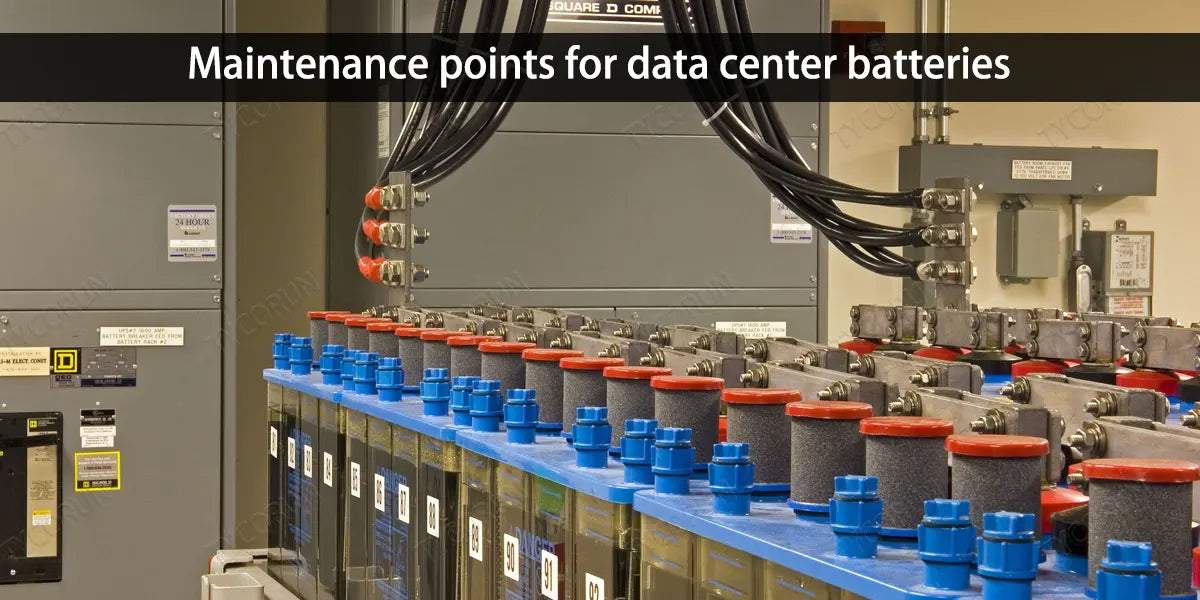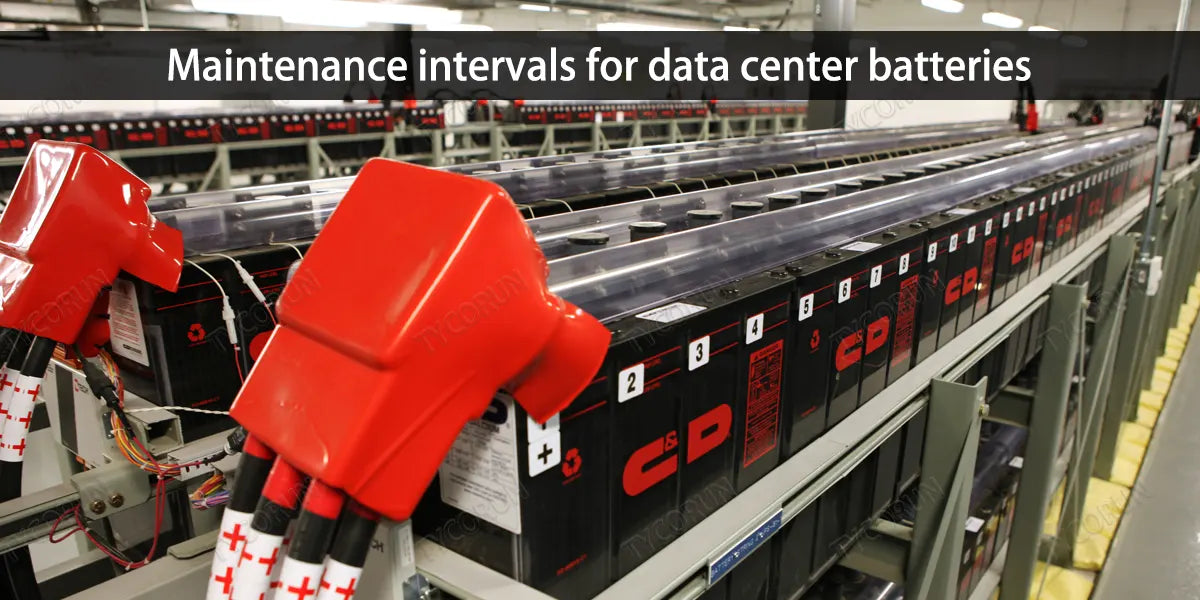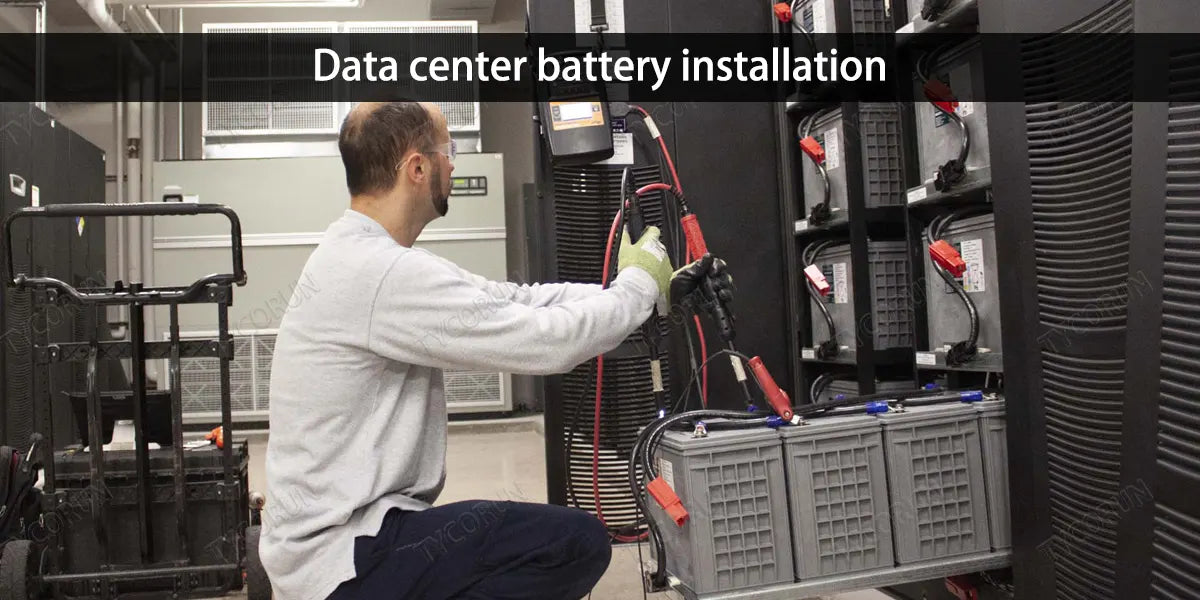
Currently, the batteries configured in data center UPS power supply are mainly valve-regulated sealed lead-acid batteries (VRLA). However, with the development and improvement of battery technology, lithium batteries have gradually become one of the choices in the future.
This article will provide a detailed introduction to the characteristics and maintenance of data center batteries.
Main content:
1. Characteristics of data center batteries
The selection and design of data center batteries must fully take into account the characteristics and development trends of modern data centers, and comply with the following principles:
① Excellent short-term constant power output
The characteristic of excellent short-time (usually ≤30min) constant power output means that the battery capacity can be reduced while meeting the same load backup time requirements, thereby reducing battery costs, or using the same capacity battery configuration can increase the total backup time of the UPS system.
② High energy density
Selecting the appropriate battery type and capacity, designing a reasonable assembly structure, optimally utilizing the data center space, and improving the overall energy density of the battery pack will help reduce the data center room area and cost.
③ High stability
The battery should have a low failure rate during its effective life, and try to avoid repair or replacement due to the failure or sudden failure of individual batteries. This is of great significance to the later safety and stability of the entire battery system.
④ Fire retardant
The plastic material of the UPS battery shell in the data center should meet the V0 flame retardant standard. All exposed metal parts of the battery terminals, connectors and output bus terminals should be insulated and protected, and the battery rack needs to be grounded.
⑤ Consistency
The consistency of the capacity, open circuit voltage, float voltage and other indicators of each cell of the UPS battery pack in the data center should comply with relevant standards.

⑥ Seismic resistance
The data center batteries rack is designed to meet the requirements for level 8 intensity resistance. It is recommended to use soft connections between the data center batteries.
⑦ Easy to install and expand
The modular structure design of the battery and the provision of special installation tools can reduce the overall installation cost. The placement of the battery pack and the design of the battery pack rack should provide space for later capacity expansion.
⑧ Easy to maintain and replace
The distance between battery pack placement and maintenance channels should meet the requirements for daily maintenance and battery replacement.
⑨ Long service life
Data center batteries should have reasonable service life requirements. Too short a service life will increase the instability and cost of the UPS system. VRLA batteries used for backup purposes can be divided into AGM batteries and GEL batteries according to the types of electrolyte.
If you are interested, you can click to check some comparisons of gel battery vs agm and agm vs lead acid.

2. Challenges of lithium battery application in data centers
In addition to solving reliability and cost issues for the large-scale application of lithium batteries in data centers, in fact, users still have many problems when applying lithium batteries. These problems will also become key considerations for the large-scale application of lithium battery (lifepo4 battery) in the future.
Challenge 1: The problem of current sharing among multiple cabinets. Multiple cabinets are discharged in parallel. Due to the inconsistency in the internal resistance and capacity of the cells and the difference in power distribution, the discharge among the cabinets is uneven. Especially when discharge at large current in short-term, which causes overcurrent protection of the battery cabinets one by one.
Challenge 2: Online expansion of new and old battery cabinets. During the application process of lithium battery systems, it is impossible to avoid the problem of partial failure rate, or the need for capacity expansion due to increased load. Mixing old and new battery cabinets will cause serious bias current due to the inconsistency in internal resistance and capacity, and even cause the single battery cabinet to be disconnected due to overcurrent.
Challenge 3: Voltage balancing problem in series connection of battery cells. Inconsistency in the internal resistance and capacity of the battery cells within a single battery pack leads to overvoltage during charging of a single battery cell, making it impossible for the entire battery system to be fully charged.
Challenge 4: Failure fixing problem. When a certain battery module in a single string battery pack fails and causes the entire battery pack to fail to work normally, quickly fixing and replacing it could be a tricky problem.
Challenge 5: Fire protection problem. When lithium batteries are installed in a micro-module data room, if a fire breaks out in the lithium batteries, it is needed to control the fire within the cabinet and prevent it from spreading to surrounding ICT equipment.

3. Maintenance points for data center batteries
● Insulating pads should be arranged in the battery pack maintenance channel.
● Batteries from different manufacturers, different capacities, and different models are strictly prohibited from being used in the same system.
● If lead-acid batteries are used, valve-regulated sealed lead-acid batteries do not need to be initially charged before use, but supplementary charging is required. Supplementary charging voltage should be carried out according to the product technical instructions.
● Under normal circumstances, when the valve-regulated sealed lead-acid battery pack encounters one of the following situations, it should be equally charged (if there are special technical requirements, the product technical instructions shall prevail), and the charging current shall not be greater than 0.2C.
① The float charge voltage of more than two units is lower than 2.18V/unit.
② Leave it unused for more than 3 months.
③ Full float charging operation for 6 months.
④ The depth of discharge exceeds 20% of the rated capacity.
⑤ For high-voltage DC, the server input overvoltage protection issue (282V) must be considered when equalizing charging.
● The charging capacity of the data center batteries is generally not less than 1.2 times the discharged capacity. When the charging current does not decrease for 3 consecutive hours, the charging is considered to be terminated.
● The float charge voltage of the data center batteries should be set according to the product technical instructions, and pay attention to temperature compensation. Under normal circumstances, the float charge voltage is 2.23~2.25V (25C, 2V monomer).
The float charge voltage at a certain actual temperature U = U0 (25℃) + (25-t) × 0.003 (t = ambient temperature).
● During float charging, the maximum difference in voltage of each battery terminal in the entire group should not be greater than 90mV (2V), 240mV (6V), 480mV (12V), and the internal resistance deviation should not exceed 15%.
● Battery capacity tests and discharge tests for the data center batteries should be carried out regularly.
① A verification discharge test should be done every year, discharging 30% to 40% of the rated capacity.
② It is recommended to conduct a capacity test every 3 years.
③ During battery discharge, the cell voltage and discharge current should be recorded at certain intervals.

4. Maintenance intervals for data center batteries
There are currently no clear regulations on how often the batteries in the computer room should be replaced. Enterprises can choose the best replacement time according to their own needs.
The replacement time is closely related to the data center batteries material, warranty period, number of charges and discharges, changes in internal resistance, temperature, humidity and cleanliness of the battery room and other environments and should be considered comprehensively.
Replacing the data center batteries seems simple, but in fact it is not that easy for an operating computer room because it involves the safe operation of the computer room. From communicating and determining the plan to receiving materials and organizing construction, there is a lot of work to be done, and there should be no mistakes in every construction process.
5. Data center battery installation
Before installing data center batteries, make sure to carry out the following preparations:
Safety measures:
- Implement pre-job safety education and training for construction personnel.
- Wear qualified personal safety equipment.
- Appoint a dedicated person in charge of security.
- Prepare corresponding measuring instruments and operating tools within the validity period
Preparation:
- Organize and determine the installation personnel.
- Take the batteries and a few spare cables and transport to the equipment room, unpack the batteries.
- Check data center batteries parameters to ensure that the battery appearance is intact and battery wiring terminals are not oxidized.
- Label the numbers for data center batteries in sequence.
- Use an internal resistance meter to measure the internal resistance and data center batteries voltage, and record the measurement data of each battery according to the label number.
- If the power supply is switched to the generator when the data center batteries are replaced, contact the generator to prevent service interruption caused by an unexpected mains outage.

Installation process:
- The construction personnel bring installation and test tools (a set of sockets, adjustable wrenches, screwdrivers, hydraulic pliers, multimeters, etc.) to the data center construction site.
- Check to confirm that the sleeve handle and wrench handle are well insulated.
- Plug the generator output line into the backup power industrial connector, start the generator, and let the generator run first.
- Open the data center batteries cabinet and take photos for backup. Find the output cable connected to the UPS host and confirm the cathode and anode.
- Confirm that the generator is running stably. After measuring the voltage at the input end of the transfer switch in the distribution cabinet to be normal, switch to the generator side, observe and confirm that the UPS host is running normally, and disconnect the battery circuit breaker in the battery cabinet.
- Remove the old data center batteries. Remove the data center batteries from top to bottom on the battery rack. Remove one screw and wrap electrical tape around the connector of the connecting wire to insulate it (this step is very important) to prevent it from being damaged due to short-circuit at the anode.
- Remove all batteries, put them away, and start installing new batteries.
- Start from 1# according to the battery number, and start installation from the bottom layer of the battery rack. The position and direction are the same as before. The connector screws must be tightened, the connecting wires should be neat and the curvature should be consistent. There should be appropriate gaps between batteries, and strict precautions should be taken during the connection process.
- After installing the data center batteries, confirm that the cathode and anode are correct, measure the total voltage, and confirm that the data center batteries are installed and connected correctly.
- Calculate the charging voltage based on the battery parameters, and measure the data center batteries output charging voltage, which meets the charging requirements of this batch of batteries. Close the battery cabinet and check the host charging menu. At this time, the data center batteries are already charging.
- Install the battery cabinet, switch the input of the UPS host back to the mains power, and confirm that the input and output voltage of the UPS host is normal. Stop the generator, disconnect the connecting wires, pack the tools, load the old batteries into the truck for transportation back, and clean up the site.
Related posts: replace your UPS battery with lithium-ion, UPS vs inverter, sealed lead acid battery
















